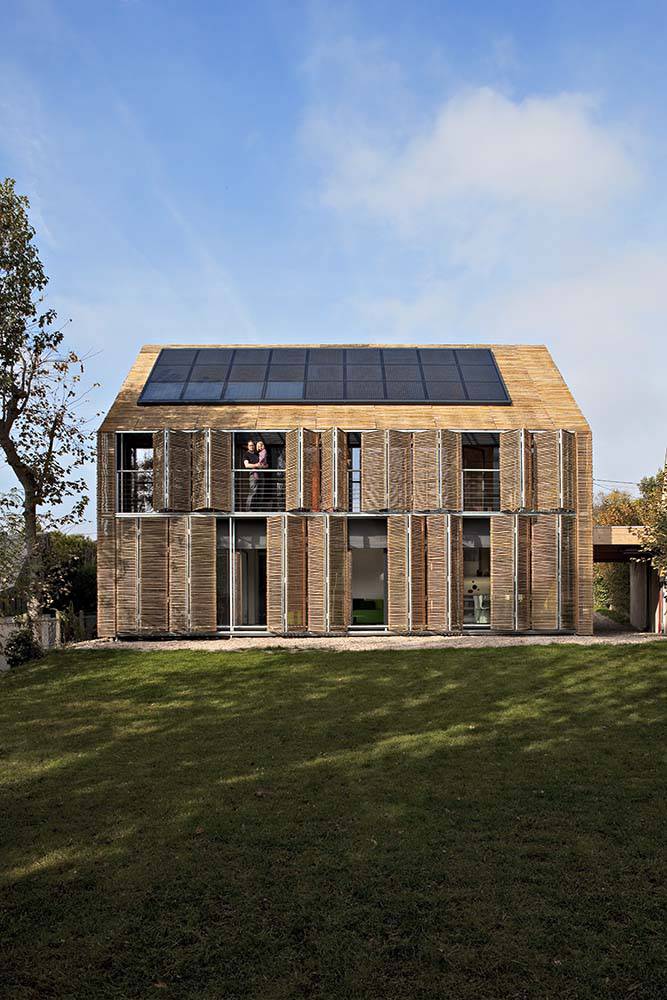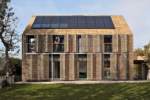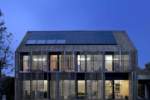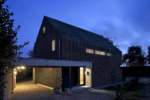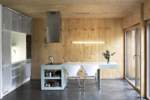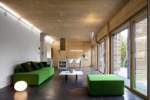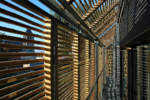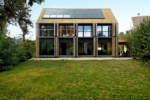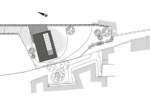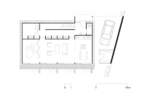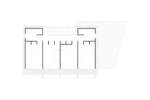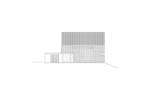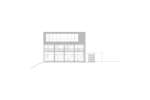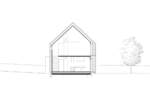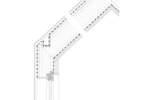architect: Karawitz Architecture
location: Bessancourt, France
year: 2009
The town of Bessancourt lies about 28 km north-west of Paris. An old and intact town centre with narrow alleys, courtyards and small houses surrounds the church, which dates from the 12th-13th century. Due to the urban planning regulations, the simple cubature of the house soon became clear. With a fine and airy membrane of bamboo poles, a sculptural form emerges, the transparent facing disperses the mass, lends lightness and creates depth. The light is broken up by the bamboo poles attached at intervals, and a special atmosphere is created inside, subject to the position of the sun. A very important element in the planning is the “spine“.
It consists of 60 cm wide wooden discs arranged at intervals of 90 cm and divides the floor plan in two parts having a ratio of 1:2. The larger part is situated on the southern side and contains the living and sleeping areas, the smaller part is on the northern side and accommodates the sanitary and service/utility rooms. The division of the rooms is clear, the distances are short, materials are natural and untreated; a clear principle is observed even for the lighting – the energy-saving fluorescent tubes and technical cables run along the “spine“, partly visibly. Some parts of the spine serve as load bearing supports and
accommodate the technical installations. This central element which is sometimes closed and sometimes open, is accessible from both sides and serves as a cabinet, shelf or partition.
It houses the kitchen, the washroom, and the lighting and ventilation ducts. The latter are partially visible as part of the aesthetic concept and make the ventilation system comprehensible and clear.
Along the southern facade there is a catwalk of metal lattices which serves as a balcony and mounting support for the folding shutters. In this way a space is created which lends additional depth to the interior. The house was implemented using mainly natural materials – wood panels for the construction, cellulose and wood-fibre for the insulation, plasterboards, biopaints for the interior finishing. The photovoltaic panels on the roof make this house an energy-plus-house, according to the French standard.


